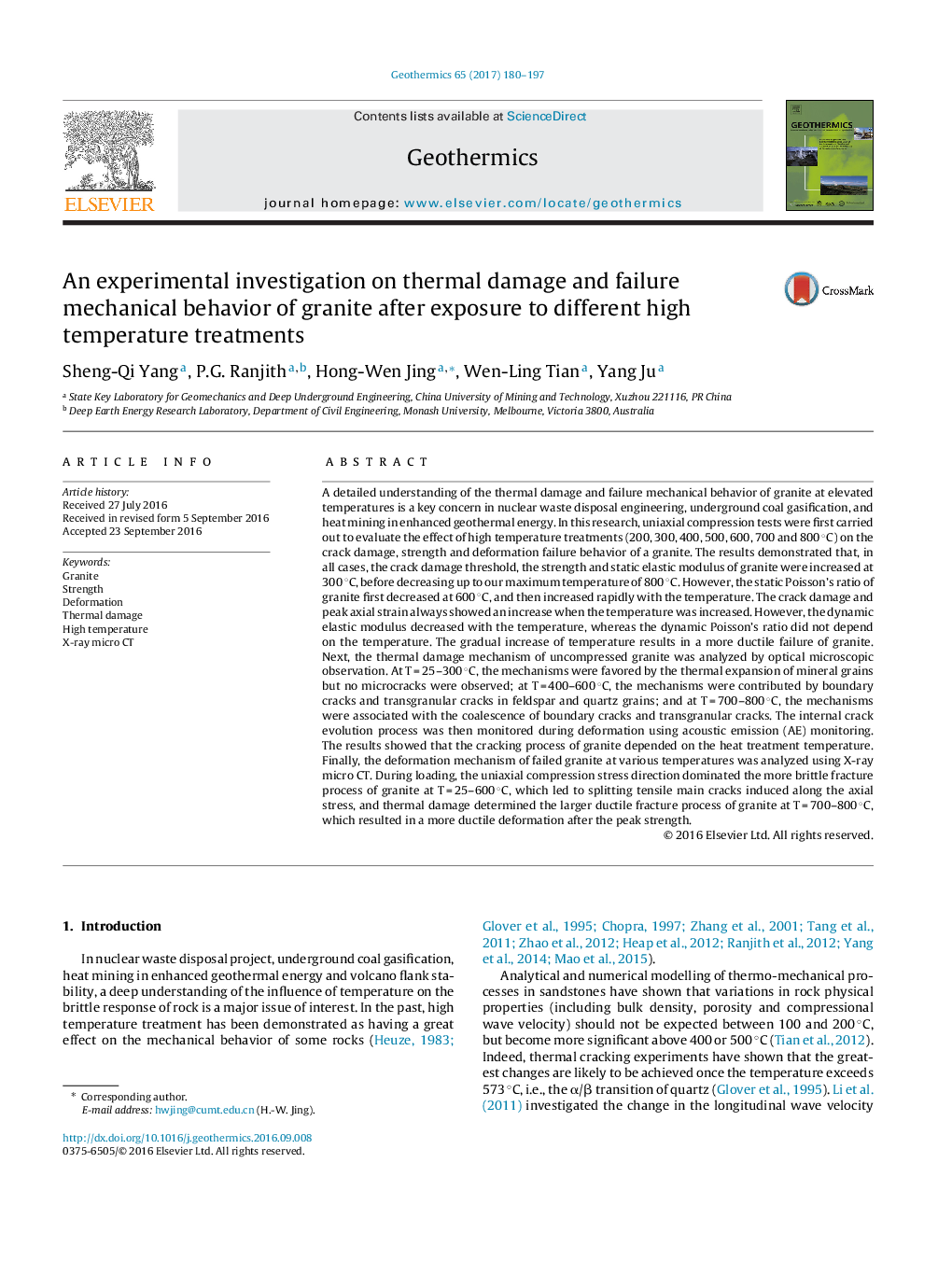| کد مقاله | کد نشریه | سال انتشار | مقاله انگلیسی | نسخه تمام متن |
|---|---|---|---|---|
| 8088763 | 1521904 | 2017 | 18 صفحه PDF | دانلود رایگان |
عنوان انگلیسی مقاله ISI
An experimental investigation on thermal damage and failure mechanical behavior of granite after exposure to different high temperature treatments
ترجمه فارسی عنوان
یک بررسی تجربی در مورد آسیب های حرارتی و رفتار مکانیکی شکستگی گرانیت پس از قرار گرفتن در معرض روش های مختلف درجه حرارت بالا
دانلود مقاله + سفارش ترجمه
دانلود مقاله ISI انگلیسی
رایگان برای ایرانیان
کلمات کلیدی
سنگ گرانیت، استحکام، تغییر شکل، خسارت حرارتی، درجه حرارت بالا، میکروسکوپ اشعه ایکس،
موضوعات مرتبط
مهندسی و علوم پایه
علوم زمین و سیارات
ژئوشیمی و پترولوژی
چکیده انگلیسی
A detailed understanding of the thermal damage and failure mechanical behavior of granite at elevated temperatures is a key concern in nuclear waste disposal engineering, underground coal gasification, and heat mining in enhanced geothermal energy. In this research, uniaxial compression tests were first carried out to evaluate the effect of high temperature treatments (200, 300, 400, 500, 600, 700 and 800 °C) on the crack damage, strength and deformation failure behavior of a granite. The results demonstrated that, in all cases, the crack damage threshold, the strength and static elastic modulus of granite were increased at 300 °C, before decreasing up to our maximum temperature of 800 °C. However, the static Poisson's ratio of granite first decreased at 600 °C, and then increased rapidly with the temperature. The crack damage and peak axial strain always showed an increase when the temperature was increased. However, the dynamic elastic modulus decreased with the temperature, whereas the dynamic Poisson's ratio did not depend on the temperature. The gradual increase of temperature results in a more ductile failure of granite. Next, the thermal damage mechanism of uncompressed granite was analyzed by optical microscopic observation. At T = 25-300 °C, the mechanisms were favored by the thermal expansion of mineral grains but no microcracks were observed; at T = 400-600 °C, the mechanisms were contributed by boundary cracks and transgranular cracks in feldspar and quartz grains; and at T = 700-800 °C, the mechanisms were associated with the coalescence of boundary cracks and transgranular cracks. The internal crack evolution process was then monitored during deformation using acoustic emission (AE) monitoring. The results showed that the cracking process of granite depended on the heat treatment temperature. Finally, the deformation mechanism of failed granite at various temperatures was analyzed using X-ray micro CT. During loading, the uniaxial compression stress direction dominated the more brittle fracture process of granite at T = 25-600 °C, which led to splitting tensile main cracks induced along the axial stress, and thermal damage determined the larger ductile fracture process of granite at T = 700-800 °C, which resulted in a more ductile deformation after the peak strength.
ناشر
Database: Elsevier - ScienceDirect (ساینس دایرکت)
Journal: Geothermics - Volume 65, January 2017, Pages 180-197
Journal: Geothermics - Volume 65, January 2017, Pages 180-197
نویسندگان
Sheng-Qi Yang, P.G. Ranjith, Hong-Wen Jing, Wen-Ling Tian, Yang Ju,
